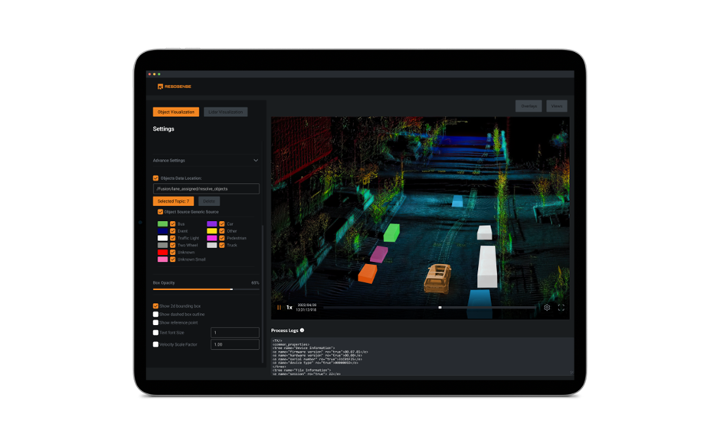Validation and Visualization of Vehicle Data
Industry:
Automotive
Challenge:
To convert massive data streams into actionable insights for refining intelligent systems, cameras, and AI models during live test scenarios.
Outcome:
The vResolv.io team’s efforts culminated in a solution which embodied efficiency, scalability, and versatility.
DEVELOPING THE STRATEGY
vResolv.io adapted its strategy in order to develop a system capable of of instantaneous logging, analysis and triggering of real-time alarms for test drivers. The solution was also required to illuminate the car’s intelligent system’s decisions and detections dynamically and in real-time.
Challenge #1
Managing complex sensor data decoding from various automotive buses like CAN, LIN, FlexRay, and handling communication protocols such as SOME/IP, ensuring synchronization across diverse data streams.
Challenge #2
Addressing CMake and C++ issues, and establishing a seamless Continuous Integration/Continuous Deployment (CI/CD) pipeline via Jenkins to accelerate the development lifecycle
Challenge #3
Decoding intricate network protocols like SOME/IP and tackling the complexities associated with segmented messages.
Challenge #4
Addressing the learning curve associated with complex tech stacks owing to multiple factors.
THE SOLUTION
Engaged in a year-long collaborative venture, VW Group and Magna International, with our expertise, pioneered a robust solution to enhance real-time data logging, analysis, and visualization during automotive test drives. Utilizing advanced technologies and frameworks like ROS, TinyXML, pugixml, and Qt, coupled with industry-standard verification tools like CANoe protocol for data security, and data management through a backbone developed for live and recorded data playback, with libraries for MF4 playback, the project yielded a modular, scalable, and secure platform ready to tackle future automotive challenges. All development was carried out under TISAX guidelines for information security and data protection.
IMPLEMENTATION OVERVIEW
Development Methodology:
The project adopted the Scrum framework, facilitating iterative progress, fostering collaboration, and ensuring timely delivery of high-value solutions.
Data Management:
Utilizing the observer pattern, together with ROS topics/messages and services, a robust data flow management system was constructed. A caching mechanism was incorporated to expedite the loading times of parsed databases, ensuring swift data retrieval.
Decoding & Parsing:
The decoding and parsing solutions leveraged TinyXML, pugixml, and Qt frameworks. These frameworks were instrumental in crafting precise parsers for FIBEX, ARXML, and DBC databases, enabling accurate encoding and decoding of complex data structures from CAN, CANFD, SomeIP, DLT and Flexray protocols.
ROS & RViz Integration:
ROS (Robot Operating System) was central to the project, facilitating the construction of player and live data nodes, ensuring seamless interchange between live and recorded data. Furthermore, RViz was deployed for immersive 3D data visualization.
Data Security and Compliance:
Compliance with industry standards was ensured through adherence to TISAX (Trusted Information Security Assessment Exchange) protocols, a recognized standard for information security in the automotive industry, safeguarding the integrity and confidentiality of data throughout the project lifecycle.
Verification Tools:
The solutions were verified against industry-standard tools like CANoe, ensuring the accuracy and reliability of real-time data logging, analysis, and visualization solutions developed.
RESULTS & OUTCOMES
By the end of development, the solution emerged as a symbiosis of efficiency, scalability, and adaptability.
Outcome #1
The implementation of Scrum ensured a structured and agile solution capable of real-time logging, analysis and dynamic filtering of data during test drives.
Outcome #2
The meticulous configuration setup, coupled with the modularity of ROS, provided a highly customizable solution that could be tailored to meet specific requirements. Moreover, the solution was capable of precise tuning of AI models via real-time 3D visualizations in RViz.
Outcome #3
The adherence to TISAX protocols underscored the commitment to data security and compliance with industry standards. An alert mechanism was also implemented, ensuring enhanced safety during test drives by raising timely alarms.
Outcome #4
The verification against industry-standard tools like CANoe reaffirmed the reliability and accuracy of the solutions, instilling confidence in the accuracy and reliability of the developed solutions.

